Let’s start with the star topology…
Star Topology
You will see the star topology often when we talk about switches, here’s an example:
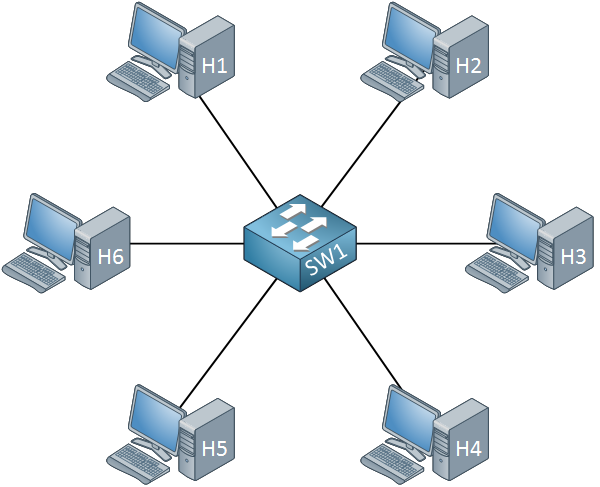
It’s called a star topology because all communication has to go through the switch, it is the central component of our network.
Full Mesh
The full mesh topology means that each device is connected to all other devices. Here’s an example:
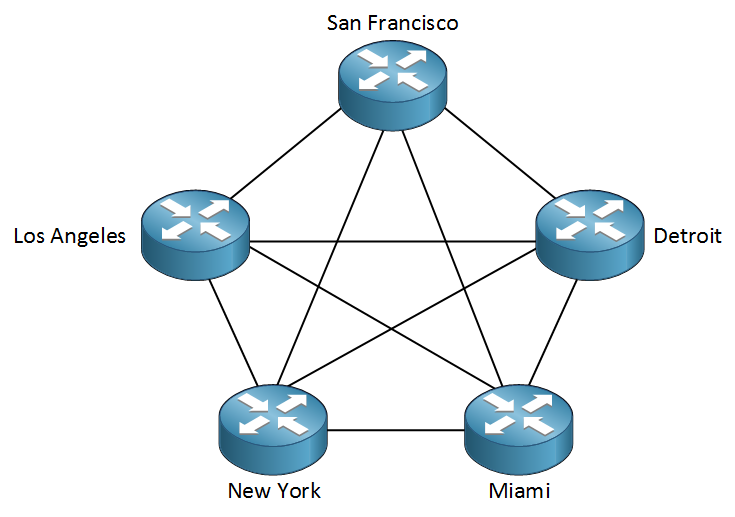
The advantage of a full mesh topology is that you have full redundancy. For example, in the picture above we can see routers in different cities. We can go from Los Angeles to New York with a direct connection. If this link fails, there are still plenty of backup links we can choose from. The downside of a full mesh topology is that it’s expensive. For each link, you will need to pay for the connection and you require additional interfaces on your routers.
Partial Mesh
An alternative to full mesh is the partial mesh topology. This is a trade-off between cost and redundancy. Here’s an example:
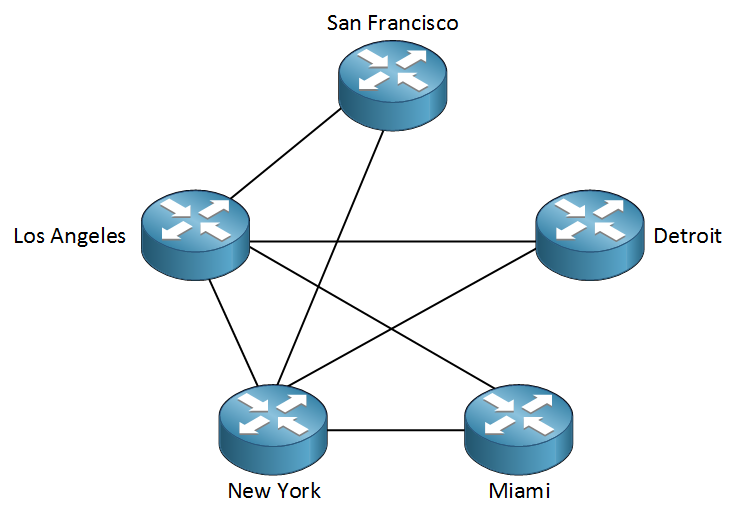
The Los Angeles and New York sites are the most important ones, so they are connected to all other sites. There is no direct connection between San Francisco, Detroit and Miami. This doesn’t mean that these sites won’t be able to communicate with each other but communication has to go through the Los Angeles or New York sites.
You might also encounter partial mesh topologies on our LANs. For example:
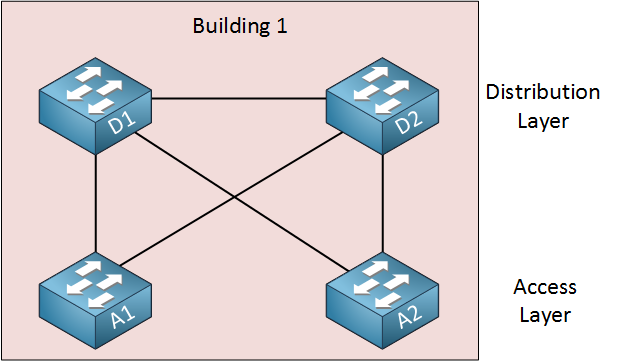
Above we see the switches in a single building. The access layer switches (A1 and A2) are connected to the distribution layer switches (D1 and D2) with partial mesh. There is no link in between the two access switches. The distribution layer switches however are connected to each other and the two access layer switches (full mesh).
Hub and Spoke
Another topology we might encounter is the hub and spoke topology:

In this topology, we have one central device called the hub, and the other devices are called spokes. Above we have three routers. The headquarters of this company is in New York. This is where all company resources are located. There are also branch offices that need to access the headquarters resources. In this case, it makes sense to build a hub and spoke topology where the New York router becomes the hub and the Miami and Los Angeles routers are spoke routers. Traffic between spoke routers is often routed through the hub router because of security reasons. The spoke routers could be simple routers while the headquarters has a powerful firewall that inspects all traffic.
Hybrid
In reality, we will mix a lot of the network topologies that we described above. Here’s an example of a complete network:
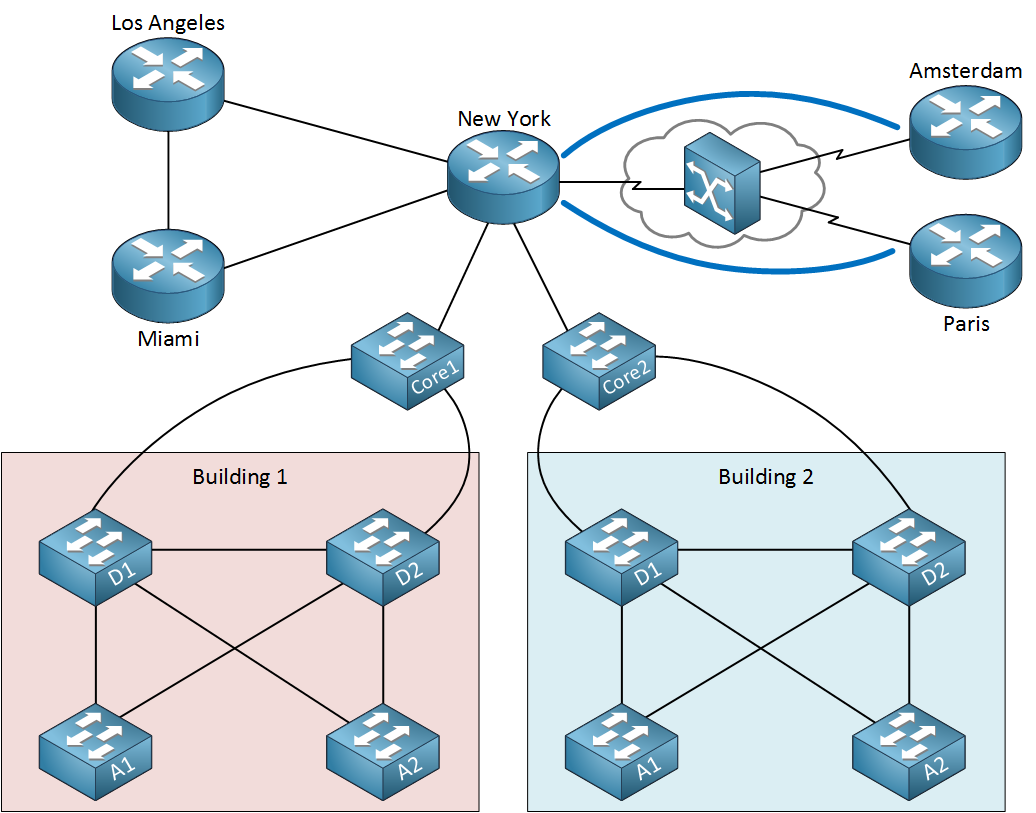
Here’s what we see above:
- Our LAN located in New York with two buildings and a core layer.
- Each building has access and distribution layer switches. The access layer switches are connected with partial mesh to the distribution layer switches. The distribution layer switches use full mesh.
- The buildings are connected with full mesh to two core layer switches.
- Our WAN is connected to Los Angeles and Miami with full mesh.
- Our WAN is also connected to Amsterdam and Paris, our New York router is the hub and Amsterdam/Paris are two spoke routers.

No comments:
Post a Comment